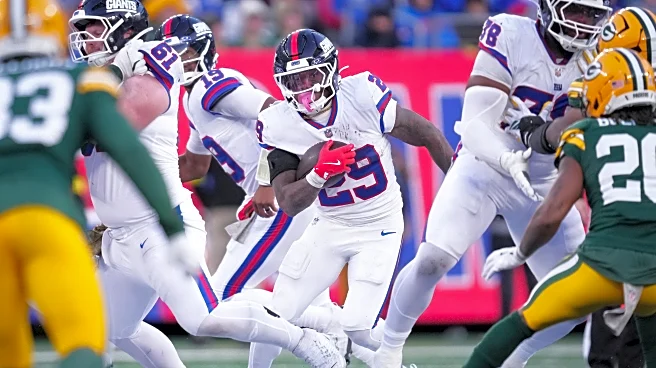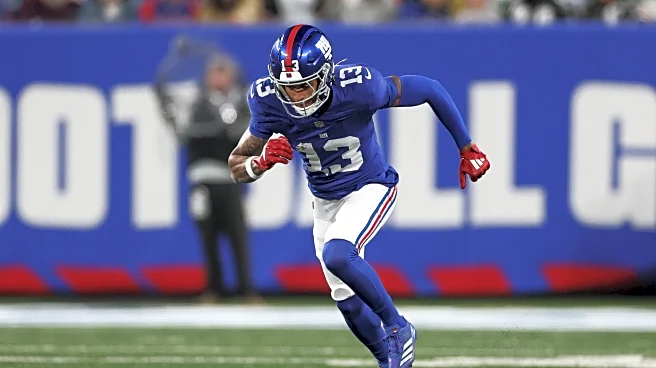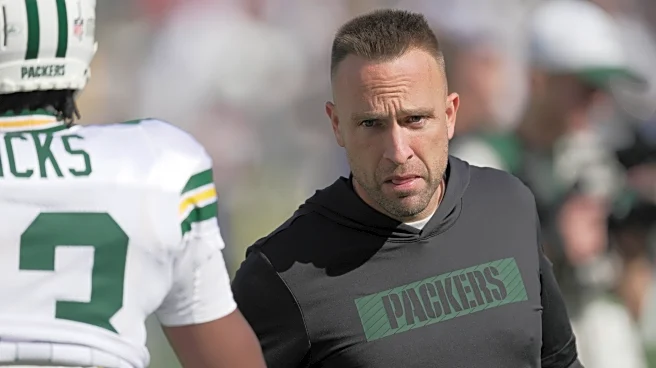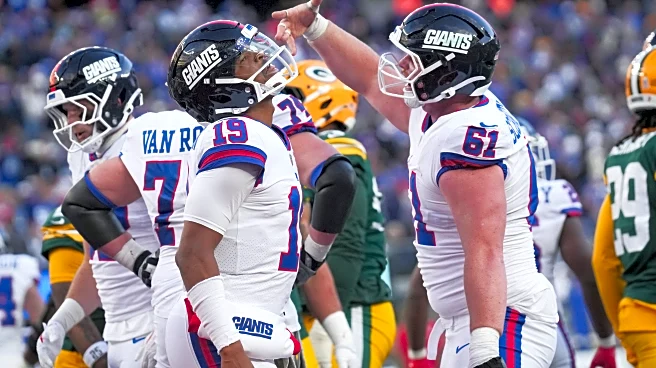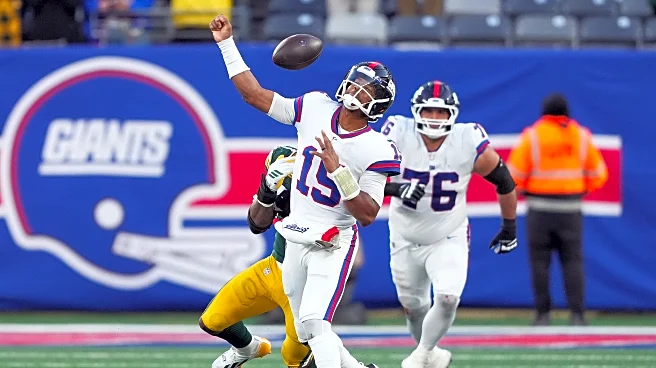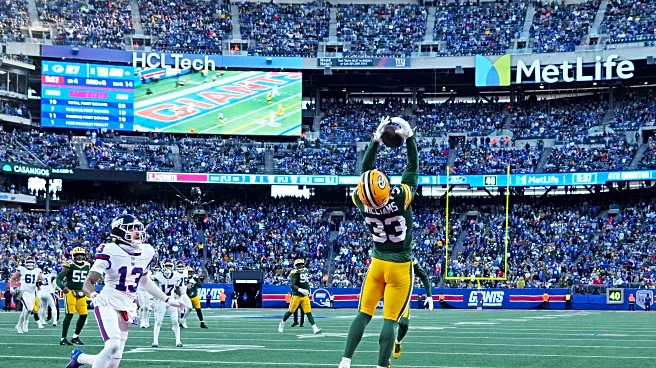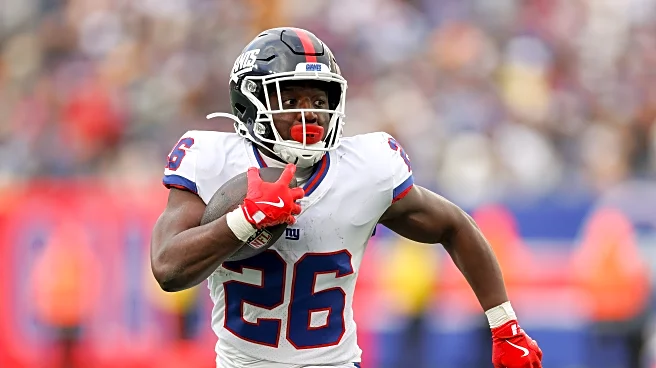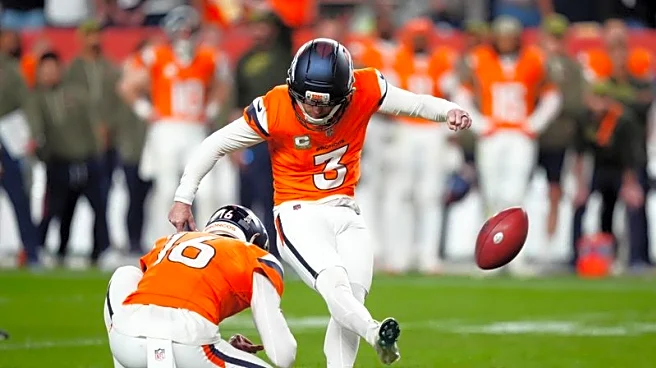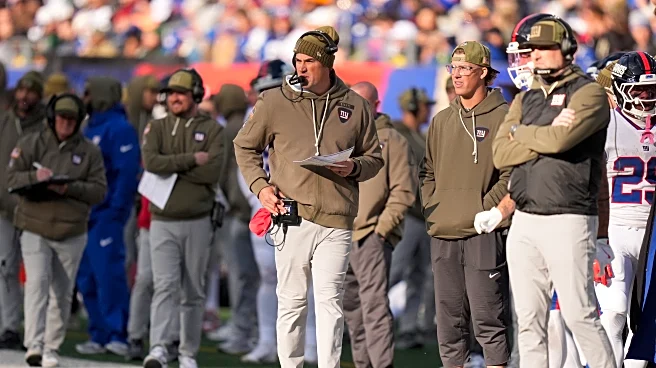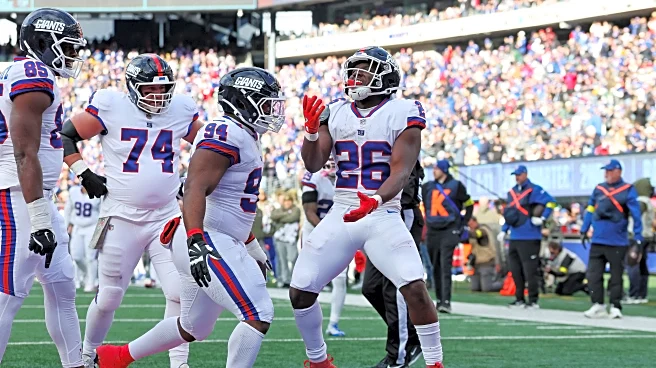The New York Giants sustained their fifth consecutive loss in Mike Kafka’s head coaching debut. New York fell 27-20 to the Green Bay Packers, despite possessing the football for 10 more minutes and out-gaining the Packers by forty yards. The Giants, in part, were able to possess the football due to a dedication to the rushing attack and the overall effectiveness of the ground game.
Sure, 3.7 yards per carry is nothing to write home about. New York picked up 142 yards on 38 total rushing attempts with
three rushing touchdowns (two by Devin Singletary and one by Jameis Winston). According to Doug Analytics on X, the Giants had a +0.075 EPA/Rush against the Packers; Since 2000, teams with 38+ rushes and with at least a +0.075 EPA/Rush are 322-14 (95.8%) — the Giants were one of the 4.2% on Sunday.
NFL NextGen Stats had both Tyrone Tracy Jr and Devin Singletary with an average of 2.4 yards before contact on inside runs, with only one attempt surrendering a defensive hit behind the line of scrimmage. Doug Analytics points out that the Giants averaged 0.7 yards before contact on inside runs with a 48% hit behind the line of scrimmage rate on the season — that’s a massive difference!
The Green Bay defense allowed just 96 rushing yards per game (seventh in the NFL) and held Saquon Barkley to just 2.7 yards per carry in Week 10. But Tracy averaged 4.6 yards per carry, and Singletary found pay dirt twice. The former averaged 3.21 yards after contact, and the latter just 2.06. It’s important to note, though, that Singletary has taken every snap inside the 10-yard line over the last three weeks.
Mike Kafka continued to employ a multifaceted rushing approach, utilizing a combination of counter, power, F-Lead, DUO, and zone rushing plays, while also adjusting the formations. The Giants’ offensive line operated well as a unit and allowed the Giants’ backs to find the necessary creases to prevent negative plays and move the chains. It wasn’t the most efficient rushing game in the world, but it was effectiv,e and it allowed the Giants to stay multidimensional offensively.
Green Bay primarily used a 3-3-5 nickel package, but did go to a 3-4 BASE on 29% of snaps. Jeff Hafley mostly had a six-man box and had quick rotation with the strong-side safety into the box against run looks. This allowed the Giants to block their double-teams and climb up to the second level. Carmen Bricillo’s unit blocked well up front agianst the lighter approach.
Here are five rushing plays; we’ll start with Devin Singletary’s first touchdown run to conclude the Giants’ opening drive:
Devin Singletary 1.0
Green Bay aligned in an OVER front with Singletary (26) aligned toward the strength in shotgun. Singletary’s aiming point seems to initially be the outside leg of John Michael Schmitz (61), who, in tandem with Greg Van Roten (74), is double-teaming the one technique. Green Bay constricted the interior rushing lanes with the three-techinque, who was blocked up by Andrew Thomas (78) on an elite scoop that allowed Jon Runyan Jr. (76) to locate the linebacker, Edgerrin Cooper (56).
Singletary does an elite job of seeing the defensive flow and pressing the line of scrimmage toward Thomas’ block on the three-techinque; this forced Evan Williams (33) to fit inside, seeing the block on Cooper, and Singletary made that assumption wrong by cutting the run back to the weakside where John Michael Schmitz and Van Roten had cleared a path for the veteran back — excellent execution by the Giants.
T-Formation touchdown
We have seen the Giants employ this T-Formation on the goal line before, and it worked well on Singletary’s second touchdown above. The Giants align Thomas outside next to Jermaine Eluemunor (72) with Theo Johnson (84) to the strength — that’s a lot of beef! All 11 Giants’ players are in frame! The Packers put six defenders on the line of scrimmage, and the offense zone blocks left with defensive lineman Elijah Chatman (94) as the kick-out block with Daniel Bellinger (82) leading the way.
Chris Manhertz (85) is tasked with handling the end man on the line of scrimmage, and he tackled the task well. It’s only a 2-yard touchdown, but I appreciate the design and execution, while also noting that they ran away from the two big tackles they had aligned on the opposite side of the field. The Giants had used that alignment earlier and ran toward them, albeit not from a T-formation.
Pull them!
The Giants still ran power and counter from a variety of formations, and they’ve done well to use the tight end in motion right before the snap to provide momentum for the kick-out. Above on this second-and-7, Tracy follows Van Roten to the hole off the back of Johnson’s kick-out and behind the double-team by Bellinger and Andrew Thomas. The linebacker, Quay Walker (7) got caught staring too long in the backfield, and Thomas located him for a second, while Bellinger was elite on his block of Micah Parsons (1). Walker managed to scrape outside, but Van Roten was in position to execute his pull.
The last line of defense, safety Evan Williams, made the eventual tackle, as Wan’Dale Robinson (17) did an excellent job blocking on the outside as well.
F-Counter
This was a fantastic half-time adjustment by the Giants to get into the I-Formation and have Bellinger, who motioned into the full-back spot, start to one side and peel back to assume the initial unblocked defender, like misdirection or counter run with one blocker. The Giants ran this several times in the second half for positive gains.
On this first-and-10 run, Van Roten lost badly at the point of attack, and Cooper eagerly shot inside and away from containment with the end man on the line of scrimmage staying tight to the line for Daniel Bellinger. Singletary, who saw the lack of rushing lanes in front of him, cut behind Bellinger’s block and used the green grass to his advantage, picking up seven yards.
17-yard Tyrone Tracy rush
Down 27-20, the Giants rip off this 17-yard run by Tyrone Tracy Jr. out of shotgun with the back toward the tight end. The Packers are in an OVER front and they rotate strong side back to a two-high shell at the snap. with the weakside apex defender quickly fitting the run. The double-team by John Michael Schmitz and Jon Runyan Jr. removes the one technique and the linebacker, Isaiah McDuffie (58). Both players took excellent angles and positioned themselves well, allowing Tracy to make a play.
The apex defender did not constrain the B-Gap and remained on the outside of Thomas’ block on Micah Parsons, making him late to the fit. Tracy squeezed through the weak-side and ran through multiple tackles to secure a first-down — them some — for the Giants. Plus, of course, Tracy’s efforts on the play were spectacular.
Final thoughts
The Giants performed well on the ground and avoided negative plays, which too frequently put them in second and third-and-long situations. Both backs executed well, creating more yards on the ground, and the offensive line remained flexible and adaptive to Mike Kafka’s play-calling. There were wrinkles in the game plan, and the Giants effectively employed multiple rushing approaches to keep Green Bay honest; the Giants rushed for 50 more yards than Green Bay has allowed, on average, this season. However, victory remained elusive.
